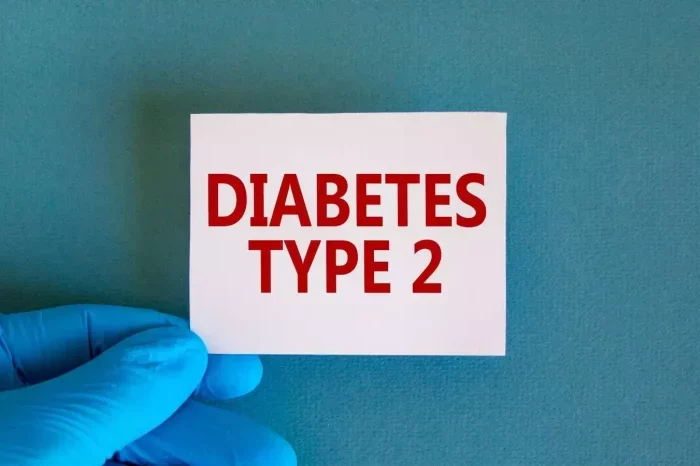Type 2 diabetes mellitus (T2DM) is a chronic metabolic disorder characterized by insulin resistance and relative insulin deficiency, leading to elevated blood glucose levels. Management of diabetes requires regular monitoring of blood glucose levels, often facilitated by the use of glucose meters at home. These devices rely on test strips to measure glucose levels in a drop of blood, providing crucial information for patients and healthcare providers to adjust treatment regimens and maintain glycemic control.
The accuracy of glucose meters is paramount in effective diabetes management. Factors such as environmental conditions, user technique, and the condition of the meter itself can impact the reliability of glucose readings. To ensure the consistency and accuracy of results, manufacturers recommend using control solutions regularly. Control solutions are solutions of known glucose concentrations that are used to verify the proper functioning of glucose meters and test strips. This article explores the importance of control solutions in diabetes management, their role in ensuring accurate glucose readings, and practical guidelines for their use.
The Importance of Accuracy in Glucose Monitoring
Accurate measurement of blood glucose levels is critical for individuals with diabetes to make informed decisions about medication, diet, and lifestyle choices. Variations in glucose readings can lead to inappropriate adjustments in insulin dosages or dietary modifications, potentially affecting overall glycemic control. Studies have shown that even small discrepancies in glucose meter readings can significantly impact clinical outcomes and patient safety.
Glucose meters are designed to provide results that are within a specified range of the actual blood glucose concentration. Regulatory agencies such as the FDA (Food and Drug Administration) in the United States and similar bodies worldwide require manufacturers to validate the accuracy of their devices through rigorous testing before they are approved for use by consumers. Despite these measures, factors such as aging test strips, improper storage, or user error can affect the performance of glucose meters over time.
Understanding Control Solutions
Control solutions serve as a quality assurance tool for glucose meters. They contain a known amount of glucose that simulates the glucose levels found in blood. By testing the meter with control solution regularly, users can verify that the meter and test strips are functioning correctly and providing accurate results. Control solutions come in different glucose concentrations corresponding to low, normal, and high blood glucose levels. Manufacturers provide specific control solutions tailored to their meters to ensure compatibility and accuracy.
How Control Solutions Work
Control solutions mimic the chemical composition of blood to a certain extent, allowing users to perform a quality check on their glucose meter and test strips. The process typically involves:
- Selecting the Right Control Solution: Users must choose a control solution that matches the glucose concentration level they wish to test—low, normal, or high.
- Applying the Control Solution: The control solution is applied to a test strip in the same manner as blood. The meter then analyzes the solution and displays the glucose reading.
- Comparing Results: The meter’s reading should fall within an expected range specified by the control solution manufacturer. Deviations outside this range may indicate issues with the meter or test strips.
Control solutions are designed to provide immediate feedback on meter accuracy without the need for a blood sample. This allows users to identify and address potential issues promptly, ensuring reliable glucose readings when actual blood samples are tested.
Ensuring Meter Reliability
Regular use of control solutions helps ensure that glucose meters remain reliable and accurate over time. Factors that can affect meter performance include:
- Test Strip Quality: Low-quality or expired test strips may produce inaccurate results.
- Environmental Factors: Extreme temperatures or humidity can degrade test strip performance.
- Meter Maintenance: Regular cleaning and proper storage of the meter can prevent malfunctions.
By incorporating control solution testing into their routine, individuals with diabetes can enhance the reliability of their glucose monitoring system and make more informed decisions about their health.
Practical Guidelines for Using Control Solutions
To maximize the effectiveness of control solutions in verifying meter accuracy, consider the following guidelines:
Frequency of Testing: Manufacturers typically recommend testing with control solution:
- When opening a new vial of test strips.
- If the meter is dropped or damaged.
- If the meter provides unexpected or inconsistent readings.
- At regular intervals as specified in the meter’s user manual.
Following Manufacturer Instructions: Always follow the specific instructions provided by the meter and control solution manufacturers. This includes proper storage conditions, expiration dates, and usage techniques.
Interpreting Results: Understand the expected range of results for each control solution level. If the meter consistently produces readings outside this range, contact the meter manufacturer for guidance.
Documenting Results: Keep a record of control solution tests alongside actual blood glucose readings. This documentation can be useful when discussing meter performance with healthcare providers.
Educational Support: Healthcare providers should educate patients on the importance of control solution testing and provide practical demonstrations on how to use them effectively.
Conclusion
Control solutions play a crucial role in maintaining the accuracy and reliability of glucose meters used by individuals with type 2 diabetes. By simulating blood glucose levels of known concentrations, these solutions allow users to verify that their meters and test strips are functioning correctly. Regular testing with control solutions helps identify potential issues before they affect clinical decision-making, thereby enhancing overall glycemic control and patient safety.
As diabetes management continues to evolve with advances in technology and treatment strategies, the role of accurate glucose monitoring remains paramount. Control solutions provide a simple yet effective means for users to validate their glucose meters independently, contributing to improved health outcomes and quality of life for individuals living with diabetes.
In conclusion, integrating control solution testing into routine diabetes care empowers patients to take proactive measures in managing their condition effectively. By ensuring the reliability of glucose meter readings, individuals can make informed decisions that support long-term health and well-being.
Related topics:
How to Control Type 2 Diabetes



























